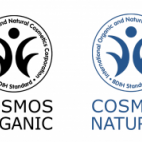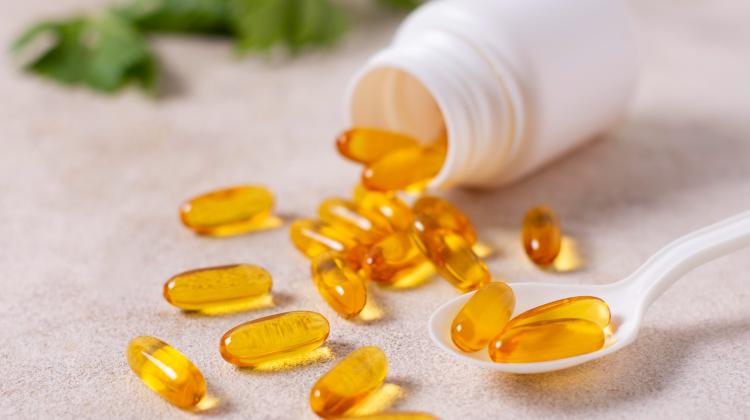The history of natural cosmetics dates back to ancient times. Information on delaying the ageing process of the skin or greying of the hair already appears in the "Luxor", an ancient Egyptian medical document dating from 1550 BC, known as the Ebers papyrus. Practically from that moment on, for the next centuries, only raw materials of natural origin were used in cosmetic preparations. It was only at the beginning of the nineteenth century with the development of chemistry, especially organic, that there was a turn towards synthetic compounds, which increasingly began to appear in their recipes.
False bio-declarations?
The renewed interest in cosmetics containing natural resources dates back to the turn of the twentieth and twenty-first centuries. Initially, these components began to be used only for marketing reasons, treating them as a kind of advertising gimmick. However, it soon turned out that the demand for them was a real need of modern times. Natural cosmetics were perceived as products containing less potentially harmful substances.
The systematically growing number of consumers looking for products made on the basis of natural ingredients caused the appearance of products on store shelves, on which you could meet inscriptions: "natural", "bio", "ecological". Often, however, the information declared by manufacturers on the label of the cosmetic was not covered by what was offered in its packaging. Due to the emerging bio-declarations, not reflected in the recipe composition, there was a need to organize them.
Unfortunately, the lack of legal regulations in force has led to the fact that in Europe various organizations have developed and started to apply their own certification rules. Products meeting the requirements of a particular association were given a corresponding logo. The most recognizable signs appearing on this type of products were French – Ecocert, German – BDIH, English – Soil Association.
COSMOS Organization
The variety of natural cosmetics and ecological labels found on the packaging, as well as the different rules for granting certificates by individual units caused confusion among consumers. For this reason, in 2002, the COSMOS (Cosmetics Organic Standard) organization was established based in Brussels and uniform certification rules were established, which covered all technological issues related to the production of natural, cosmetics, from the sourcing of raw materials to the distribution of final products.
The basic principle of this type of products is safety, hence it is excluded to use ingredients, processes and technologies that may pose a threat to both the health of users and the surrounding environment. Also, the packaging of certified cosmetics must be made of recycled materials, economical, easy to recycle.
Two categories of COSMOS
Due to the appropriate selection of ingredients for cosmetic recipes, COSMOS standards distinguish two categories of products. The first of them are natural cosmetics. In the preparations of this segment there is no need to use ingredients of organic (organic) origin. However, if they appear in the recipe, it is possible to demonstrate their presence, expressed as a percentage, on the packaging of the cosmetic preparation. The second group: organic cosmetics. Preparations of this segment must contain at least 20% of the components from organic farming. In addition, a minimum of 95% of raw materials processed by physical methods should also be organic ingredients.
For both categories of cosmetics, it is allowed to use up to 5% of strictly defined synthetic substances.
The basic raw material of most cosmetic products is water. Practically all types of natural products are allowed: drinking, spring, marine... An important segment of cosmetics are also minerals, by which we understand raw materials resulting from geological processes, excluding derivatives of fossil fuels, i.e. petroleum derivatives. This group includes both natural minerals, obtained and purified by physical methods, as well as ingredients of mineral origin, processed in accordance with applicable regulations, listed on a separate list. The most important representatives of this segment are: clays, aluminosilicates, inorganic pigments, mica, silica, natural salts.
Another group of components of natural cosmetics are agro-ingredients, i.e. raw materials obtained from agriculture, water crops or wild harvest, as well as compounds produced as a result of specific biotechnological processes.
All these ingredients can be processed by permitted physical methods (extraction, distillation, extrusion, grinding...), and the processes used for this purpose should ensure that the target components retain the properties of the active starting materials. The solvents and auxiliary materials used in the above procedures must also be of natural origin. From the group of plant raw materials of this segment, we distinguish extracts, oils, waxes, essential oils and their fractions.
It is worth paying attention to the fact that only natural substances that meet the standards of ISO 9235 or compounds isolated from them are allowed to give fragrance to natural cosmetics.
Animal and chemically processed products
In the case of animal raw materials, their use is allowed only if they are produced by animals, but do not constitute an integral part of them. Among the components of this segment, we can mention m.in sheep's wax, i.e. lanolin; milk; bee products...
In natural and organic cosmetics, a minimum amount of synthetic compounds may be used, their presence being clearly recorded on the packaging. However, it is worth paying attention to the fact that you can only use the ingredients from the list given in the standards. These include, among others, preservatives, such as benzoic, dehydroacetic, salicylic, sorbic acids and their salts, or benzyl alcohol. The introduction of other synthetic substances into the recipes of natural and organic cosmetics is prohibited.
Companies that meet the criteria of this process are marked with the appropriate logo. It is estimated that currently about 1800 manufacturers in 70 countries certify more than 40,000 products in this system.
Finally, it is worth paying attention to the fact that the issue of subjecting the cosmetic to the certification process is the sole decision of the manufacturer. The developed standards have no legal force. Products included in this segment offered in the EU must meet the requirements of the current Cosmetic Products Act. For this reason action has been taken at EU level to define natural cosmetics within the framework of the Cosmetics Regulation. The result was the development of the ISO 16128 standard, which was divided into two parts. The first one (ISO16128-1) defines natural and organic ingredients. The second (ISO16128-2) presents the methodology for calculating the indexes of naturalness, natural origin and organic and organic origin of raw materials used in cosmetics.





